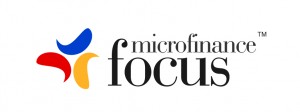Microfinance Plus Threatened in Bolivia
For hermana Alejandra, microfinance is not a dirty word. She lives in the remote village of Chua Visalaya on the shores of the famous lake Titicaca. She is part of a group of 10 men and women who use a village bank to take out small loans or save money. They meet every month to make their payments, helped by a loan officer from microfinance institution CRECER, and are spurred on by their reputation in their community to make timely payments. Without this scheme, Alejandra would have never been able to pay for her son’s operation. Her fellow members, many of whom can’t read or write, have been able to send their children to school, buy cattle or agricultural tools and fix their houses, all through the village banking scheme, which has existed in some form or another for nearly 30 years.
In fact, the country’s financial and investment sectors have grown at a rate unprecedented in Latin America since microfinance programmes were introduced 25 years ago. After a trial and error start, Bolivia is now rated second most favourable country in the world for microfinance development, according to The Economist Intelligence Unit. Taking advantage of the lack of financial infrastructure and high poverty levels, the microfinance sector has grown explosively. Microfinance institutions (MFIs) are now lending to over 1 million people in rural and urban populations and the national industry portfolio amounts to over US $10 billion, for a population of only 10 million. Many of the MFIs, such as Banco FIE, started as non-profit organisations but with time have grown into substantial and regulated banks.
Worryingly, this remarkable progress could prove its own undoing. An essential part of the additional services offered by MFIs to their most vulnerable clients, referred to as “Microfinance Plus”, is in consideration by Bolivian policy-makers to be scrapped. The change is an attempt to regulate and professionalise the burgeoning sector, which in many ways retains its non-profit ways of dealing with clients.
The Microfinance Plus scheme provides education, health and social services to clients in addition to the loan itself. On the day of Oikocredit‘s visit, hermana Alejandra and the fellow members of her village banking group were taking part in a session about essential cervical cancer tests and received tokens to have tests (usually costing $7) done at the local clinic. Cervical cancer death rates in Bolivia are five times the rate of the USA – interventions like this are essential to drive these numbers down. Other ways Microfinance Plus might work is through helping clients understand and manage their finances, improve their houses, know where to seek help if their families are in trouble. The scheme allows the loan officer to help clients improve their livelihood in a more holistic sense, making them more likely to borrow and pay back sustainably.
The need for good regulation in such a quickly expanding sector is clear. But it should not be at the expense of an essential service that helps Bolivians rise out of poverty. Poverty is not just a financial issue and cannot be resolved with pure capital injection. It is the ability to build relationships between clients and loan officers, the opportunity to get advice and support beyond the loan itself that makes a loan truly life-changing. Without it, the newly grown, regulated and competitive financial sector in Bolivia risks losing its roots – helping regular Bolivians live better lives.
By Monica Middleton for Microfinance Focus
About the Author: Monica recently joined Oikocredit in April 2014 as National director of our UK & Ireland office based in London, and is responsible for raising the profile of Oikocredit and generating inflow investment capital. She recently graduated with an MSc in Sustainability & Responsibility from Ashridge Business School, where she developed an interest in social & environmental entrepreneurialism and the pursuit of double & triple bottom lines.



